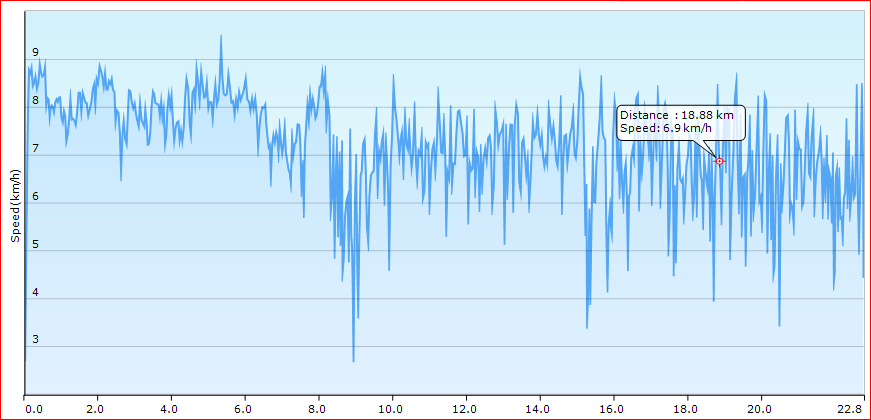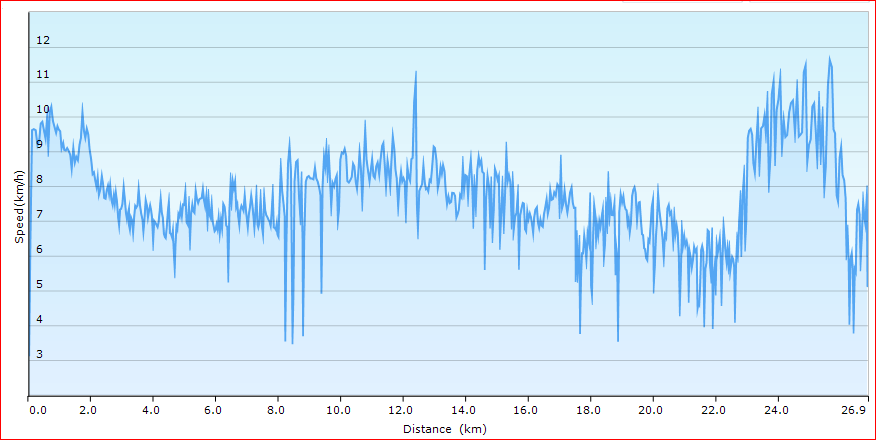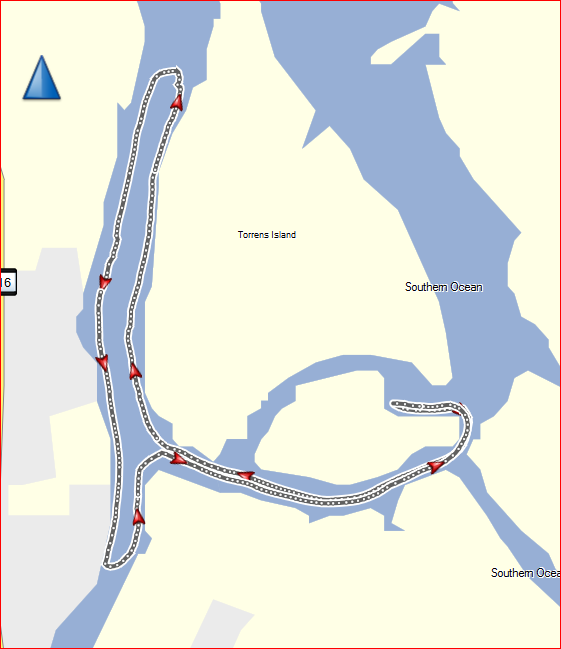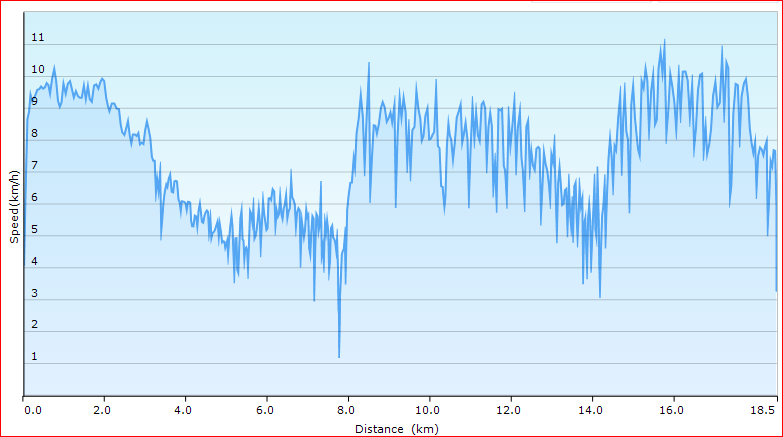.. and when you don’t get that right you are really off your game.
This week, after about an hour I got very uncomfortable – and it took me a good 20-30 minutes to settle down. My cushion was not quite right and I had to try and shuffle it around under me. As soon as It became a problem, my speed really dropped off and I never really got back into the rhythm again. In hindsight, I should have stopped, got out and re-adjusted my seat.
Once again, I managed to get lucky and pick the best weather this weekend – Saturday was raining nearly all day and wind was blowing – basically terrible and I was not holding out much hope to get out on Sunday. Well, Sunday morning, overcast, but no rain and very little wind, a quick check of the tide charts to determine a suitable course.
Tide this week was outgoing and the low was going to be about 1.2M. This is enough (just) so that I can get thru the cutting at the northern end of Torrens Island, so I decided to do an anti-clockwise of the Island and to go up the River to add a bit of extra distance in. When I started, it was about 3 hours from the top of the tide, and I knew I would still have enough water to get thru.
As it was, when I got to the cutting it was quite shallow – I had less than 1/2m of water under me, but at least I could paddle the whole way and not walk.
The highlighted “X” on the water is an interesting point – it is basically where the tide does not flow – but simply goes up and down as it is where the water meets as it flows around the Island. So, with an outgoing tide, when going anti-clockwise – I am actually padding against the tide for a little way.
I was tucked in quite close to the Island as there was just enough water to paddle in and the mangroves offered a little bit of protection from the wind.
This week the wind was quite light varying from N to NW at around the 5-15km/h. I was actually going quite well for the first hour until I got a numb bum about the time I was going thru the cutting. Basically most of the way along the Island back up the Port River I spent time trying to sort this out which slowed me down. Once again, I had to battle with the wake of the tug-boats going up and down the river. Only had 1 small rough patch from the wind – as I came thru the cutting into the Port River, in shallow water with the wind almost in my face until I crossed the river.
- Distance: 22.8km
- Time” 3:13.20
- Avg Moving Speed: 7.1km/h
- Tide: 2.1 High / 1.2 Low
- N to NW wind 5-15km/h
Not a Pretty Site!
Well, it is a look – but not a great one. When I go out paddling I am not going to win any fashion awards, but I am going to ensure that I am warm and comfortable.
It took me a little while to work out what works best for me and it is all about layers. What I wear as a base layer is compression garments – long legs short shirt. Next layer is a long layer of thermals, followed by another layer of shorts and t-shirt, then the cap. Getting in and out means getting wet feet. I have lightweight foot cover that has a rubber sole.
I found that without the compressions, I would get cramps in my legs several hours after I finished – something that I no longer need to deal with. The thermals are for warmth, the shorts are for extra padding on the seat, the shirt help keeps the wind out.
In summer, I tend to go with a short sleeve thermal layer or go without if it is warm enough.







